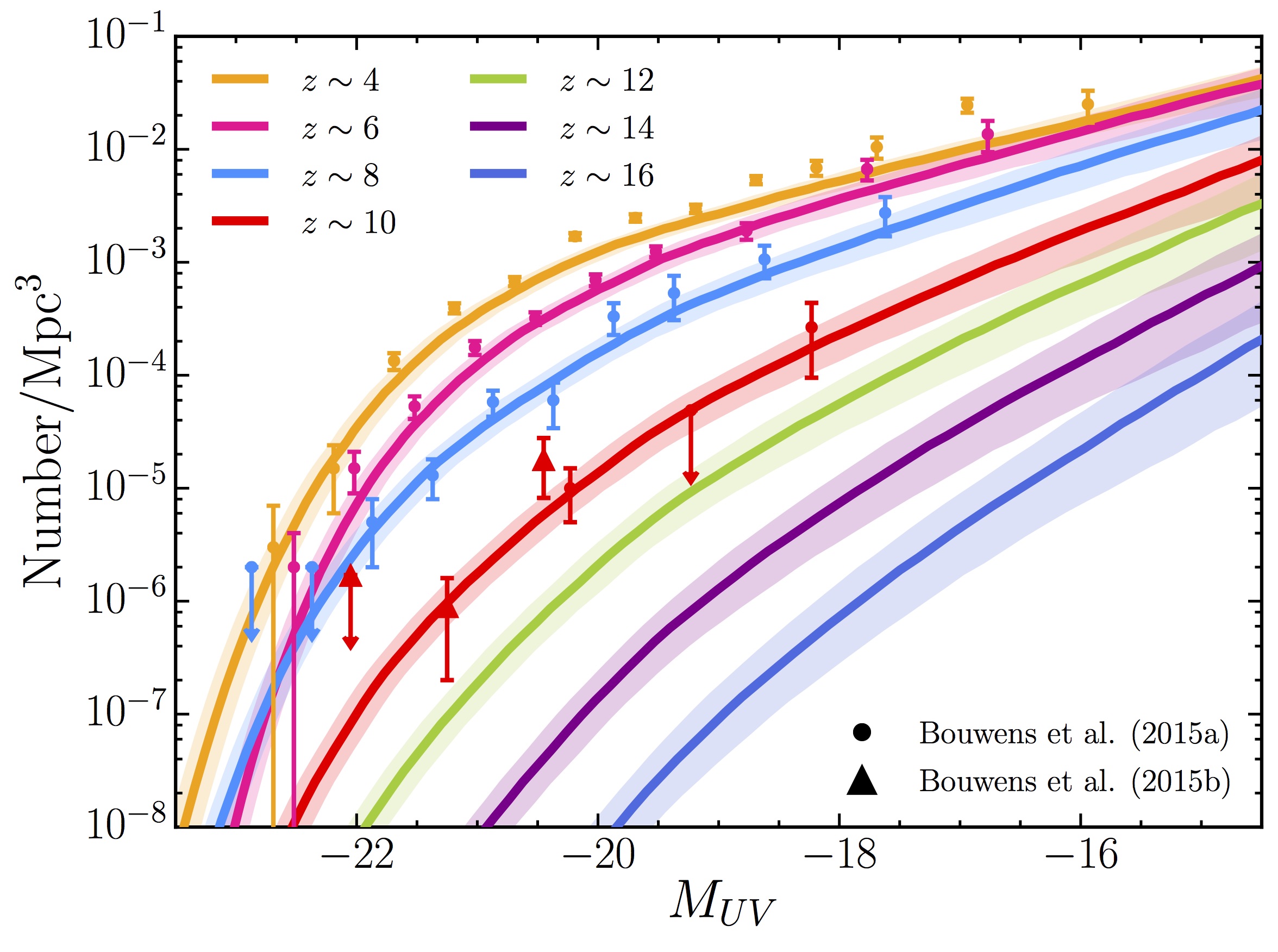First Galaxies
How did the first galaxies evolve?
Ensembles of galaxies can be studied by their density distribution with luminosity, the galaxy luminosity function (LF). Observing changes in the LF with redshift allows us to see galaxy evolution in a statistical sense.
In Mason, Trenti & Treu (2015) we showed that if we assume dark matter halo growth drives the growth of galaxies we could explain the observed UV LF evolution and other global galaxy properties over 0 < z < 10, without requiring any evolution in feedback mechanisms. However, JWST has shown us this does not work at higher redshifts! My group is actively trying to understand why.
Recent projects in my group include:
- Investigating possible reasons for the z>10 UV LF excess observed with JWST (Mason+23)
- The impact of mass-dependent stochasticity on our observations of galaxies at high redshift (Gelli+25)
- An overview of the BEACON JWST pure-parallel survey, designed to robustly determine the number densities of z>8 galaxies with minimal cosmic variance (Morishita, Mason+25)

Predictions for the evolution of the high redshift UV luminosity function from Mason et al. (2015)